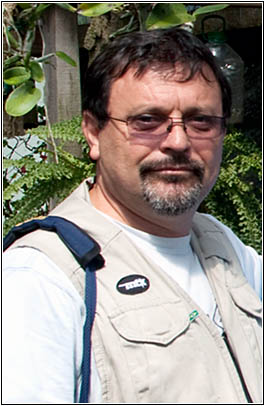 |
Marcelo Vieira Nascimento was born in Florianópolis, in the state of Santa Catarina, where he lives and works.
He is geographer, Master in Civil Engineering, crazy about plants and orchids in particular, he follow s the postgraduate course in Botany of Ornamental Plants in the Federal University of Lavras in the state of Minas Gerais, associated to the CEAP – Center of Environmental Studies and Landscaping .
Expert in many orchids habitats mainly in his home state, he got interest in orchids when he was 12 years old and since 15 ago he increased his cultivation. Due to his religious formation and in to pay homage to the old name of his home town, he called his nursery " Nossa Senhora do Desterro" (Our Dame of Exile).
|
ON: Why did you start to cultivate orchids? Which was the magic moment of attraction?
MVN: Ma passion for the orchids started in 1971, when I was 12 years old. This year, exactly March 22nd, I could buy my first book about orchids, “ORCHIDS" , by Floyd S. Suttleworth, Herbert S. Zim, Gordon W. Dillon, with illustrations by Elmer W. Smith. I bought this book in a bookshop in the University of Santa Catarina after a afternoon of work. I mean, after distributing prospectus of a course. With the "little money" in my pocket I got in the bookshop because I have been always found of books. Having a stroll inside it I saw myself in front of the Biology bookstand, having a more careful look and then the small book was there, with a child's curiosity I had a look on the pages e each page a surprise... Illustrations of a flower that until then I had just seen in the woods around my home. Looking attentively I realized that those illustrations were similar, I mean, were identical to those I knew. Then, I set down on the floor and started to read about Laelia purpurata. As a breath of life, I noticed the magic moment of orchid attraction. |
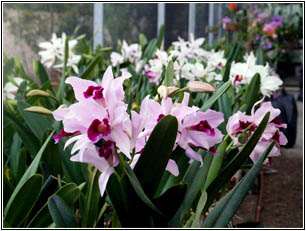
Laelia purpurata |
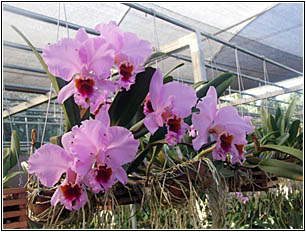
Cattleya percivaliana tipo “Rubens”
|
ON: Besides this, had you another influence?
MVN: Many people, among them, I should point out Professor Nereu do Vale Pereira, Antônio Laras Ribas, Father Raulino Reitz, Roberto Klein and Francisco Miranda. I consider my dear friend and late Cláudio de Dechamps (who has just passed away but whose absence is immeasurable) as someone who influenced me more by his simplicity, friendship, kindness, friend of the friends and by the deep knowledge about orchids, mainly when we talked about purpuratas and their crosses.
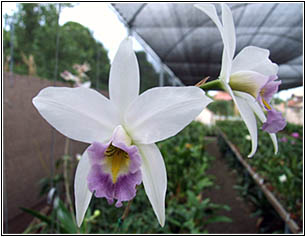
Laelia anceps coerulea ‘Moita’ |
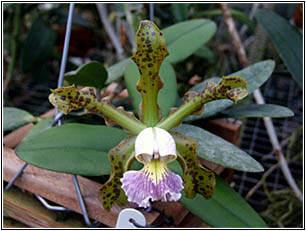
Cattleya schilleriana coerulea ‘Alessandra’
|
ON: You told you got interested in orchids when you were 12 years old, ,now about your cultivation, when did you started the cultivation?
MVN: I could say that time I got to know about orchids through that small book to cultivate, I started 15 years ago. r
|
ON: How many plants do you have, approximately?
MVN: My nursery has a total area of 400m², it can divided into 30 % for Cattleya and Vanda hybrids and 70 % for cultivate Cattleya, Laelia and others. Today I have 6.210 pots with orchids, most part of them are made of clay. The walkerianas (735) are cultivated in wood baskets. Cattleya and Laelia species which presented a high genetic potential when bloom are repotted in wood basket and can be transformed in future matrixes.
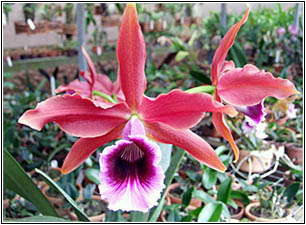
Laelia tenebrosa “ Fogo do Céu” |
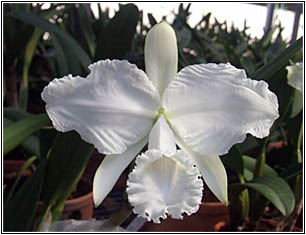
Cattleya lueddemanniana alba ‘Marcelo’
|
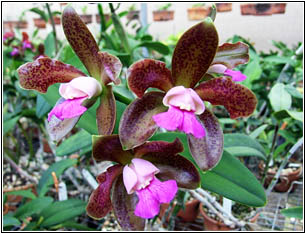
Cattleya leopoldii tipo “Dechamps” |
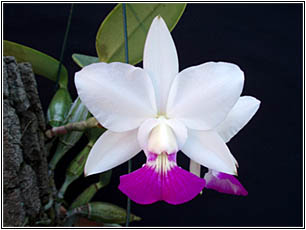
Cattleya walkeriana ‘Júlia’ |
ON: How long do you spend taking care of your orchids daily?
MVN: As an employee of Florianópolis City Hall where I work 6 hours/day, so, always is possible, I am at the nursery since 7 to 11 o'clock in the morning which give an average of 20 hours a week and in the afternoon, I go to the nursery for a stroll but no more than half an hour. |
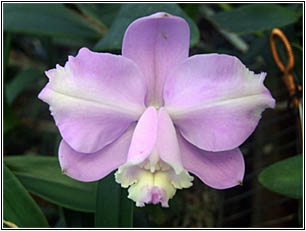 Cattleya loddigesii ‘Amélia’
Cattleya loddigesii ‘Amélia’ |
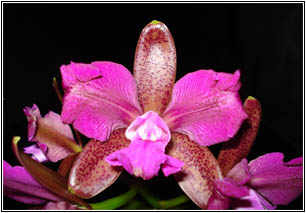 Cattleya leopoldii trilabelo “Alessandra”
Cattleya leopoldii trilabelo “Alessandra” |
ON: Do you prefer hybrids or species? Why?
MVN: I always prefer species mainly Cattleya and Laelia, but I do not refuse a high quality hybrid mainly because of the beauty of the colors. The preference for the Brazilian species is due to the possibility of keeping them alive, first in our nurseries (most part of them are in extinction) and then because all those genetic material can be useful to re-introduce them in our woods. |
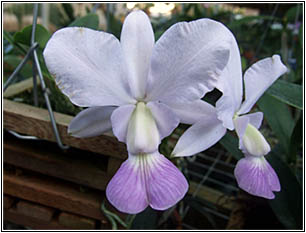
Cattleya walkeriana coerulea ‘J P’ |
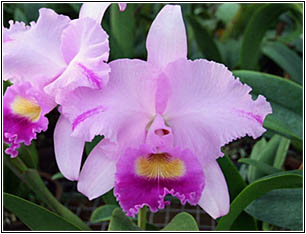 Cattleya trianaei ‘Margot’
Cattleya trianaei ‘Margot’ |
ON: Among your plants, do you have a favorite one?
Due to fact that I come from the south of the country, the natural tendency is to prefer the natives such as Cattleya leopoldii and intermedia and Laelia purpurata, of course, I have good collection of then but I prefer small plants with long lasting flowers. So I prefer Cattleya walkeriana and Cattleya schilleriana. The walkerianas are cultivated in wood baskets ((timber of good quality) and having as substrate small pieces of peroba bark and tree fern fiber and they stay hanged 2 meters above the floor. The schillerianas have always been a challenger for whom cultivate here in the south of the country. Today I have about about 250 plants (35 are coeruleas which have already bloomed and confirmed the magnificent blue sky). and I believe I succeeded in creating a very interesting environment for their cultivation. They grow in clay pots with tree fern fiber they are in shelves, 90cm from the floor. |
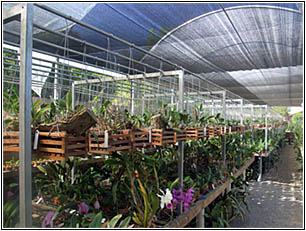 |
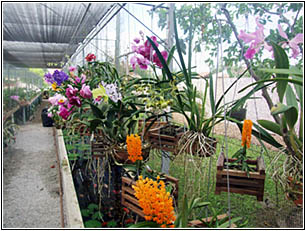 |
ON: Which are the climate conditions in your place?Do you have a cultivation tip to share with us?
MVN: There is no secret in my cultivation. The climatic conditions of my nursery can be thus described. I have a humid mesotermico climate with regular rainfalls and the temperature varies from 10 º C (in winter) and 30 º C, average. The lateral walls of the nursery are made by 50% black shade cloths. Part of It is 3m in height all covered by a 70% black shade cloths. The other part is 2m height, in semi-circle shape, covered with a milky plastic in order to philter the sun rays. The floor is covered by 3/4" pebbles.
|
Under this floor there is an irrigation system (underground) which is turn on just during the summer e cada 3 dias, in order to increase the humidity of the air, without watering the plants. Over the first part (3m height), there is also an irrigation system which works automatically and the programming is set for each season of the year.
We just use water collected from the rain. For this we have a 3000 liters water store which supplies 3 water-tanks which have the capacity of 3000 liters each. .
Each water-tank has a specific function: the first one provides pure water, the second chemical fertilizer and the third insecticide and fungicide. They are used separately and in alternated days: pure water, fortnight; chemical fertilizer, weekly and the third when necessary.
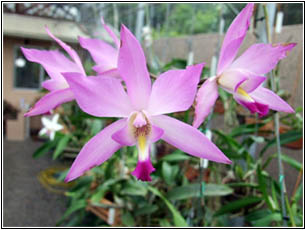
Laelia anceps tipo ‘Muito Diferente’ |
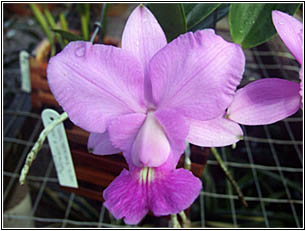 Cattleya walkeriana tipo ‘João Pedro’
Cattleya walkeriana tipo ‘João Pedro’ |
ON: One said that orchidophilia is a soft manifestation of madness. Have you done any "orchidophilic" insanity?
MVN: Insanity we always do when we are in love for something and in the case of orchids, unfortunately, those insanities can not be published because most part of them are close related to buy cuts of superior quality orchids and are secret that will never be revealed because the objection can be great, mainly my wife and my kids, it would be better to finish now.
ON: Thank you, Marcelo.
|
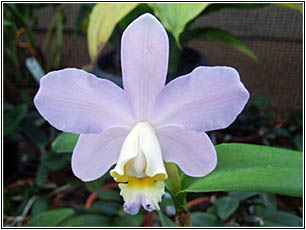
Cattleya harrisoniana coerulea “Avai” |
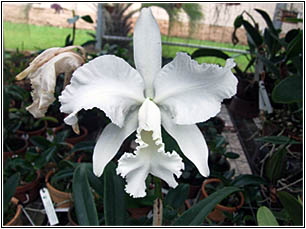 Cattleya lueddemanniana alba ‘Marcelo’
Cattleya lueddemanniana alba ‘Marcelo’ |
Photos: Marcelo Vieira
Marcelo's picture: Sergio Araujo
|
|